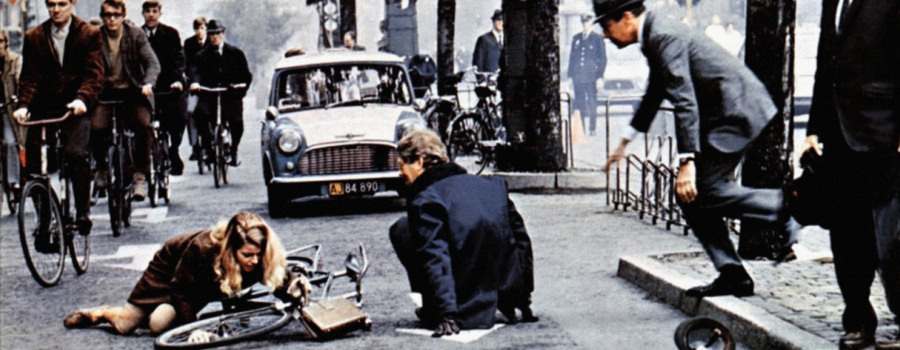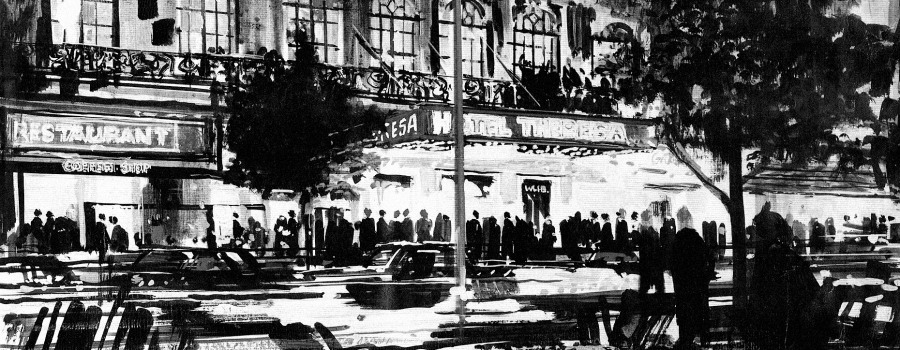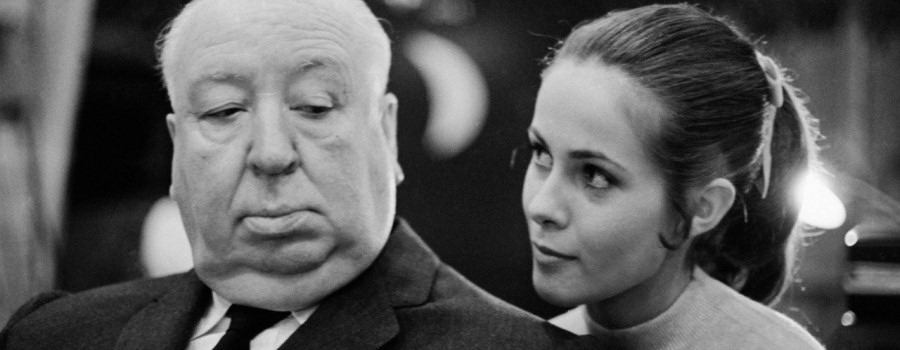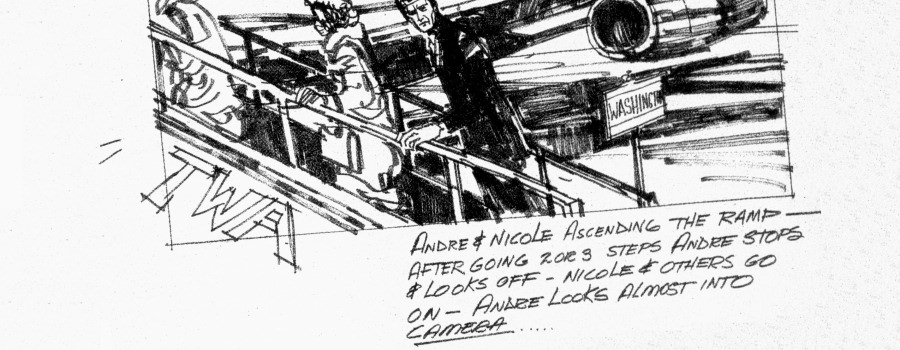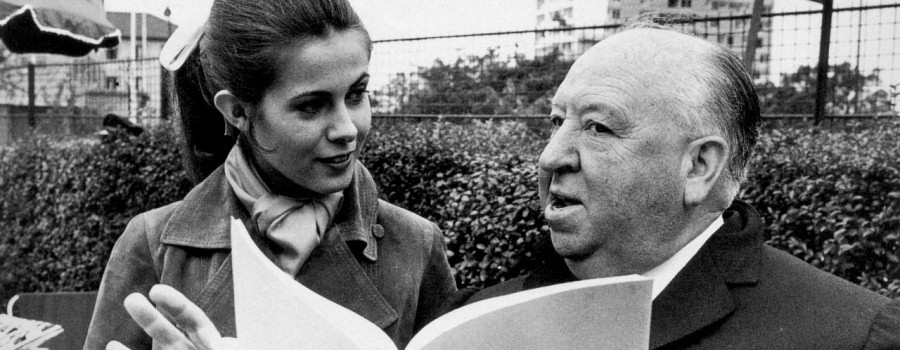Topaz (1969)
| Hitchcock takes you behind the actual headlines to expose the most explosive spy scandal of the century! | |
/0003.jpg) | |
| Alfred Hitchcock | |
| Herbert Coleman | |
| Samuel A. Taylor | |
| Leon Uris (original novel) | |
| John Forsythe Dany Robin Karin Dor Frederick Stafford Claude Jade | |
| Maurice Jarre | |
| Jack Hildyard | |
| William H. Ziegler | |
| 127 minutes (theatrical version) | |
| colour (Technicolor) | |
| mono (Westrex Recording System) | |
| 1.85:1 | |
| Universal Pictures | |
| DVD & Blu-ray | |
Synopsis
A high ranking Russian official defects to the United States, where he is interviewed by US agent Michael Nordstrom. The defector reveals that a French spy ring codenamed "Topaz" has been passing NATO secrets to the Russians. Michael calls in his French friend and counterpart Andre Devereaux to expose the spies.
Production
Following the critical and commercial failure of Torn Curtain, Hitchcock initially spent over a year developing ideas for what was titled variously as Kaleidoscope or Frenzy.[1] Several writers worked on the project, including Benn Levy, Howard Fast and novelist Hugh Wheeler before Universal's Lew Wasserman persuaded Hitchcock to put it to one side in favour of something more commercial.[2]
After browsing through the studio's available properties, Hitchcock eventually settled on Leon Uris' 1967 Cold War thriller "Topaz".
Universal were keen to develop a blockbuster film with an international cast and they set a budget of $4,000,000 — the largest budget for any Hitchcock film.
Pre-Production
Screenplay
Hitchcock initially approached Uris to develop the screenplay and they met for the first time towards the end of January 1968 before beginning regular script meetings in late April. However, it soon became apparent that the partnership lacked the necessary spark and, following a number of disagreements, Uris left in July after delivering an initial draft.[3]
On July 21st, Hitchcock, along with Herbert Coleman and Doc Erickson, flew from the US to England, to begin location scouting around Europe before returning to Los Angeles in early August.[4]
With Universal pushing for filming to start in September, Samuel Taylor was quickly hired to write a new script from scratch after Arthur Laurents turned down an offer to do it. Unusually for a Hitchcock film, as the director's time was now tied up with the other aspects of pre-production, face-to-face script meetings with Taylor happened only infrequently. Struggling with converting the complexities of the novel, Taylor was unable to deliver a completed screenplay prior to the start of filming.[5]
Shortly before principal photography began, the French Government withdrew permission to film in Paris, citing concerns about the film's premise that Soviet symphatisers had infiltrated the French intelligence agencies. The U.S. Ambassador to France intervened and assured the authorities that their concerns would be taken on-board by Hitchcock. As a result, the script was amended to ensure that the traitor Granville was suitably punished at the end of the film.[6]
Casting
The failure of Torn Curtain, for which a sizeable proportion of the budget was spent on securing Paul Newman and Julie Andrews, and the need for a large cast resulted in Hitchcock selecting less well-known actors for Topaz.
Principal Photography
Filming commenced in September, with scenes shot in Copenhagen and Paris, before returning to the Universal sound stages in October. With Taylor still working on the script, pages were often being revised right up until they were shot.[7]
By all accounts, filming suffered from the rushed pre-production process and, burdened with the stress of a complex and troubled film, Hitchcock lacked his usual spark. John Forsythe, who had worked with the director previously, recalled that Hitchcock "would go away for fifteen or twenty minutes and lie down if he could, and it was sad to see."[8]
The studio-based filming was completed in March 1969 and Hitchcock took a short break before returning to Paris in mid-April to shoot the film's ending — an old-fashioned pistol duel between Granville and Devereaux, which ends with former being shot by a Russian sniper.[9]
Partway through the weeklong shoot in Paris, Hitchcock received word from Los Angeles that Alma had been suddenly hospitalised. Distraught, he flew back to America leaving Herbert Coleman to complete filming the scene.[10]
Post-Production
The initial test screening in San Francisco during the summer of 1969 proved problematic. According to Bill Krohn, the preview audience was mostly made up of fans of the Leon Uris book and their "outrage was in the majority". In particular, the duel ending (which didn't appear in the book) was greeted with derisive laughter.[11]
The Alternative Endings
Under pressure from Universal to change the ending, Hitchcock returned to France and filmed an alternative ending at Orly Airport — Devereaux is seen boarding a plane to Washington D.C. at the same time as Granville boards one to Moscow.
After viewing the new "airport ending", Samuel Taylor raised objections to the traitor being allowed to escape without punishment. Taylor's concerns, and the risk of further objections from the French Government to the revised ending, persuaded Hitchcock to devise a further ending using existing footage.
In this second alternative ending, Granville[12] is shown returning to his house and apparently committing suicide. This is then followed by a montage of the characters who died during the film, along with a newspaper headline about the Cuban missile crisis.[13]
Prior to the film's release, debate continued as to which of the replacement endings to use — Hitchcock's personal preference was for the "airport ending, which is felt was the most true-to-life — before the decision was taken to prepare different edits of the film for different distribution markets.[14]
The "duel ending" was saved from the cutting-room floor by Hitchcock and stored in his garage, where it was discovered after his death and donated to the Academy of Motion Picture Arts and Sciences.[15]
Release & Reception
According to Variety, the initial UK release print was accidentally based on a rough-cut of the film, using the "airport ending" before it was replaced with the "suicide ending".[16][17] Elsewhere, in America and France, the "suicide ending" and a shorter two-hour cut was used for the release prints.[18]
Reviews of Topaz were mostly negative, with Richard Corliss in Film Quarterly noting "mismatched movements and lighting, clumsily speeded-up motion for no reason except to get a bit of exposition over with more quickly, poor dubbing, peripatetic matte shots, too-long dissolves, unnecessary crescendoes in the score."[19]
Writing in The Times, John Russell Taylor stated that "Hitchcock, like all major film directors, has made his share of bad films. But never, I think, one which was so generally flat, undistinguished, and lacking in any sign of positive interest or involvement on his part."[20]
Despite an extensive publicity campaign, the film failed to recoup its $4,000,000 budget and was never re-released theatrically by Universal.[21]
DVD and Blu-ray Releases
The initial 1999 US DVD release of Topaz was marketed as a "director's cut" and made use of a 142 minute cut of the film with the "airport ending". This version was later released in the UK in 2001, although matted at 1.33:1 ratio instead of widescreen.
The European DVD releases of the film all appear to make use of the shorter two-hour theatrical version of the film with the "suicide ending".
The recent Blu-ray releases of the film continue to use the longer cut for the USA and UK, and the shorter cut for other European releases.
See Also...
For further relevant information about this film, see also...
- 1000 Frames of Topaz (1969)
- articles about Topaz (1969)
- awards and nominations
- cameo appearance
- complete cast and drew
- documentaries about Topaz (1969)
- filming locations
- soundtrack albums
- trailers
- trivia
- web links to articles, information, reviews, etc
Notes
- Two versions of this film have been released on DVD and Blu-ray:
- 142 minute version with the "airport" ending
- 126 minute version with the "suicide" ending
Blu-ray Releases
released in 2012

|
Topaz (1969) - Universal (Blu-ray, USA/UK, 2012) as part of the US and UK box sets this version has the "airport" ending |

|
Topaz (1969) - Universal (Blu-ray, 2012) as part of the non-US and UK box sets this version has the "suicide" ending |
DVD Releases
released in 2006

|
Topaz (1969) - Universal (USA, 2006) Amazon (USA) NTSC 1.85:1 (anamorphic) |
released in 2005

|
Topaz (1969) - Universal (UK, 2005) Amazon (UK) PAL |

|
Topaz (1969) - Universal (USA, 2005) - part of a box set Amazon (USA) NTSC 1.85:1 (anamorphic) [02:22:00] |
Image Gallery
Images from the Hitchcock Gallery (click to view larger versions or search for all relevant images)...
posters
lobby cards
other images
Film Frames

Themes
- the MacGuffin - the spy ring
- the cultured baddie - Jacques Granville (Michel Piccoli)
- the Hitchcock cameo - at the airport, sat in a wheelchair
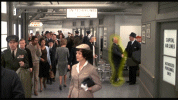
Cast and Crew
Directed by:
Starring:
- Frederick Stafford - André Devereaux
- Dany Robin - Nicole Devereaux
- Claude Jade - Michèle Picard
- Michel Subor - François Picard
- Karin Dor - Juanita de Cordoba
- John Vernon - Rico Parra
- Michel Piccoli - Jacques Granville
- Philippe Noiret - Henri Jarre
- Per-Axel Arosenius - Boris Kusenov
- Roscoe Lee Browne - Philippe Dubois
- John Forsythe - Michael Nordstrom
- Sonja Kolthoff - Mrs Kusenov
- Tina Hedström - Tamara Kusenov
- Donald Randolph - Luis Uribe
- John Van Dreelen - Claude Martin
- George Skaff - Rene d'Arcy
- Roger Til - Jean Chabrier
Produced by:
- Herbert Coleman - associate producer
- Alfred Hitchcock
Written by:
- Samuel A. Taylor
- Leon Uris - original novel ("Topaz")
Photographed by:
Edited by:
Music by:
Costume Design by:
Production Design by:
Notes & References
- ↑ Not to be confused with the 1972 film of the same name.
- ↑ Alfred Hitchcock: A Life in Darkness and Light (2003) by Patrick McGilligan
- ↑ Alfred Hitchcock: A Life in Darkness and Light (2003) by Patrick McGilligan, pages 684-86
- ↑ Alfred Hitchcock: A Life in Darkness and Light (2003) by Patrick McGilligan, page 688
- ↑ Alfred Hitchcock: A Life in Darkness and Light (2003) by Patrick McGilligan, pages 688-69
- ↑ Alfred Hitchcock: A Life in Darkness and Light (2003) by Patrick McGilligan, page 692
- ↑ Alfred Hitchcock: A Life in Darkness and Light (2003) by Patrick McGilligan, page 689
- ↑ Alfred Hitchcock: A Life in Darkness and Light (2003) by Patrick McGilligan, pages 691-92
- ↑ Alfred Hitchcock: A Life in Darkness and Light (2003) by Patrick McGilligan, page 692
- ↑ Alfred Hitchcock: A Life in Darkness and Light (2003) by Patrick McGilligan, page 692
- ↑ Alfred Hitchcock: A Life in Darkness and Light (2003) by Patrick McGilligan, page 692
- ↑ According to Thomas M. Leitch, the actor shown entering the house is Philippe Noiret rather than Michel Piccoli
- ↑ Alfred Hitchcock: A Life in Darkness and Light (2003) by Patrick McGilligan, page 693
- ↑ Alfred Hitchcock: A Life in Darkness and Light (2003) by Patrick McGilligan, page 693
- ↑ Alfred Hitchcock: A Life in Darkness and Light (2003) by Patrick McGilligan, pages 693-94
- ↑ Variety (1969) - International: Hitchcock's London Bow Of Topaz' Exudes More Mystery Than Pic Itself
- ↑ The Times (27/Jan/1970) - The Times Diary: Topaz trio
- ↑ Alfred Hitchcock: A Life in Darkness and Light (2003) by Patrick McGilligan, page 693
- ↑ Film Quarterly (1970) - Topaz
- ↑ The Times (06/Nov/1969) - The trouble with Hitchcock
- ↑ The Encyclopedia of Alfred Hitchcock (2002) by Thomas M. Leitch, pages 339-40
| Hitchcock's Major Films | |
| 1920s | The Pleasure Garden · The Mountain Eagle · The Lodger · Downhill · Easy Virtue · The Ring · The Farmer's Wife · Champagne · The Manxman · Blackmail |
| 1930s | Juno and the Paycock · Murder! · The Skin Game · Rich and Strange · Number Seventeen · Waltzes from Vienna · The Man Who Knew Too Much · The 39 Steps · Secret Agent · Sabotage · Young and Innocent · The Lady Vanishes · Jamaica Inn |
| 1940s | Rebecca · Foreign Correspondent · Mr and Mrs Smith · Suspicion · Saboteur · Shadow of a Doubt · Lifeboat · Spellbound · Notorious · The Paradine Case · Rope · Under Capricorn |
| 1950s | Stage Fright · Strangers on a Train · I Confess · Dial M for Murder · Rear Window · To Catch a Thief · The Trouble with Harry · The Man Who Knew Too Much · The Wrong Man · Vertigo · North by Northwest |
| 1960s | Psycho · The Birds · Marnie · Torn Curtain · Topaz |
| 1970s | Frenzy · Family Plot |
| view full filmography | |
